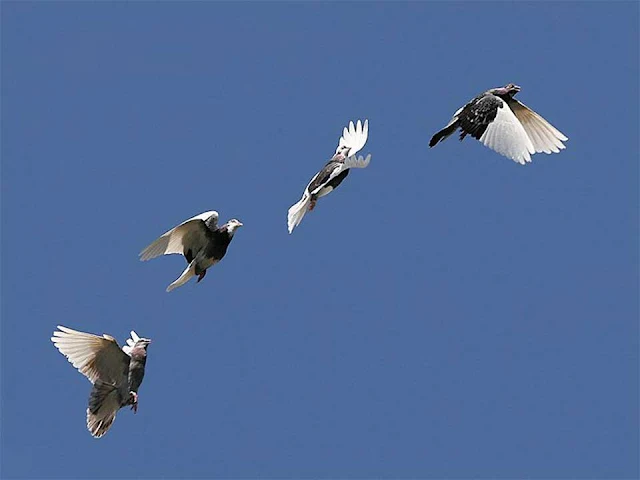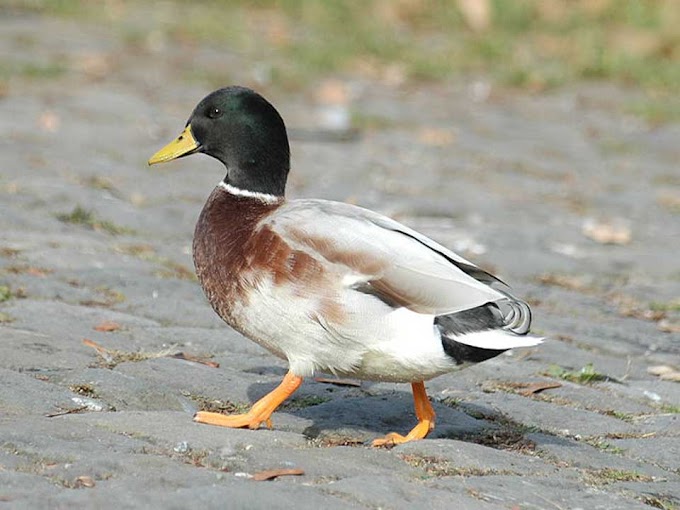Domestic Pigeon is a subspecies of ‘Rock Dove’
which is generally called “Rock Pigeon”. Rock Pigeon is an ancient domesticated
bird in the world. Mesopotamian Cuneiform Tablets has stated the domestication
of such pigeons over 5,000 years ago. However, research shows the domestication
of pigeons about 10,000 years ago.
Contribution to Humans’ Life
The pigeons have an extraordinary contribution to
humans’ life, particularly during war. Owing to their homing capability, these pigeons
were used as messengers to communicate messages during the war. These pigeons
carried a lot of important messages from one place to another during the war and some
have been adorned for their services. A number of medals were awarded to the pigeons
for their services of saving humans’ life in war.
Reproduction
The domestic pigeons are bred similarly as
‘wild rock pigeons’. Usually, humans select breeding couples. The crop milk
or pigeon milk produced by both male and female parent birds may infrequently
be replaced with artificial alternatives. The pigeons are very protective of their
eggs. Sometimes, they go to severe extents for safeguarding their eggs and seeking
vengeance on those who disturb their production process. The baby pigeons are known
as “squeakers” or “squabs”.
Homing Pigeons
The trained domestic pigeons can return their
homes if they released from a location, 1000 Km away from home, which they have
never visited before. The homing pigeon is an extraordinary breed produced through
selective breeding. The breed is used for carrying messages from one place to
another. Some members of this breed are now being utilized in pigeon sports comprising
pigeon racing and white release dove ceremony at weddings & funerals.
The capability of a pigeon to return home from an unvisited
location requires two types of information. First, the ‘map-sense’ which is their
geographic location. Second, the ‘compass sense’ they want to fly from their
new sites to reach home. Both these senses respond to numerous dissimilar cues
in different circumstances. The most prevalent idea of how pigeons are capable
to do this is that they are capable of intellect the Earth's magnetic field
with small magnetic tissues of their heads.
Pigeon Breeding for Food
Domestic Pigeons are also kept for their
meat, generally called squab and picked from young birds. These pigeons develop
to a large size in the nest before starting a flight. To get meat from the
pigeons for commercial purposes, a large white pigeon breed called “King pigeon” is
developed through selective breeding. The pigeons that are produced for getting
their meat are known as “Utility Pigeons”.
Exhibition Breeds
The pigeon-fanciers produced various
interesting breeds of the pigeons. These are generally categorized as “Fancy
Pigeons”. The pigeon fanciers participate in the shows to compete with each other and
to judge the quality standard of birds they possess and exhibit in shows. A
large number of attractive pigeon breeds including “Duchess” participate in the
shows. These pigeons have very distinctive feet which are entirely covered by the
feathers. Besides this, “Fantail Pigeons” are very attractive for their
fan-shaped tail feathers.
Flying and Sporting
Some enthusiasts of birds also kept pigeons for
Flying purposes or Sporting competitions as a source of their enjoyment. The breeds
for instance “Tipplers” are flown in endurance competitions by their possessors.
Pigeon Breeds
Fancy Pigeons
Fancy pigeon is a domesticated breed of “Wild Rock
Dove”. Fancy pigeons have been bred by the fanciers for their different characteristics
related to size, shape, color, and behavior. Such pigeons are displayed at the shows,
fairs, and other livestock shows.
There are approximately 1100 breeds of pigeons all
over the world and about 500 breeds of fancy pigeons only are found in Europe.
Also see: Beautiful Pictures of Fancy Pigeons
Tumbler Pigeons
Tumbler Pigeons are bred from the offspring
of the domesticated rock dove. The tumbler pigeons have been selected due to their skill
of tumbling and rolling over backward while flying. This capability has been found
in domesticated pigeon breeds.
According to Wendell Levi's book, the Tumbler
Pigeons were found in India before the 1590s. Charles Darwin writes in his book “The
Origin of Species” about the short-faced Tumblers as a common breed during his
lifetime. These Tumbler Pigeons are still can be seen in pigeon shows today.
Also see: Beautiful Pictures of Tumbler Pigeons
Feral Pigeons
Countless escaped pigeons have been released
over the years that have increased the number of feral pigeons. These pigeons display
a variety of feathers while some look like ‘pure rock pigeons’. The shortage of
pure wild breeds is mostly due to inter-breeding with feral breeds. However, Domestic
Pigeons can easily be distinguished from feral birds because they have usually a
metallic or plastic ring in their legs showing the bird is registered or kept
by an owner.
Also see: Beautiful Pictures of Feral Pigeons


















0 Comments